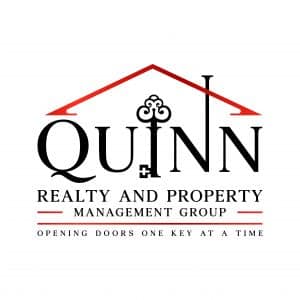Optimizing Building Management Procedures for Long-Term Profitability and Renter Retention

Reliable Interaction Methods
Clear and efficient communication makes sure that all stakeholders, including building owners, lessees, maintenance team, and management, are on the exact same web page, leading to smoother procedures and boosted renter contentment. Building managers ought to clearly detail lease terms, upkeep procedures, and communication channels to stay clear of misunderstandings down the line.
Using modern technology can also considerably boost interaction effectiveness in building monitoring. Implementing home administration software that allows for real-time updates, automated notices, and simple paperwork can enhance communication procedures and improve overall operational effectiveness. Furthermore, regular interaction via numerous networks such as e-mail, phone calls, and in-person meetings can help promote positive relationships with lessees and deal with any type of problems quickly.
Technology Combination for Upkeep
In the world of residential or commercial property management optimization, a key component that enhances operational performance and upkeep procedures is the combination of technology for improving maintenance jobs. By including innovation into maintenance procedures, building managers can gain from enhanced work order monitoring, aggressive maintenance organizing, and boosted communication with maintenance groups and occupants.
One substantial advantage of modern technology combination in upkeep is the ability to systematize job orders and track upkeep demands digitally. This simplifies the procedure of obtaining, appointing, and finishing maintenance jobs, causing quicker reaction times and boosted renter satisfaction. Predictive upkeep modern technologies can assist in recognizing potential problems prior to they rise, minimizing the likelihood of expensive fixings and minimizing downtime.

Data-Driven Choice Making
Using data-driven insights encourages residential property supervisors to make educated choices that enhance functional efficiency and take full advantage of property performance. Quinn Realty and Property Management. By leveraging information analytics tools and innovations, residential or commercial property supervisors can draw out beneficial information from different resources such as tenant comments, maintenance documents, and market patterns. This data can give vital understandings into occupant choices, functional traffic jams, and cost-saving possibilities
Data-driven decision-making enables building managers to determine patterns and patterns that might not appear with typical observation. As an example, assessing maintenance data might disclose reoccuring issues in certain systems, permitting supervisors to proactively resolve underlying problems and prevent future pricey repair work. By checking lessee contentment metrics and lease revival rates, property managers can customize their solutions to meet renter assumptions, eventually enhancing tenant retention and lasting productivity.
In addition, data-driven insights can likewise inform critical financial investment decisions by highlighting areas for enhancement or expansion based upon market demand and efficiency metrics. Generally, incorporating data-driven decision-making processes right into home management procedures can result in much more reliable source allowance, improved occupant complete satisfaction, and raised productivity over time.
Tenant Contentment Initiatives
Attracting insights from data-driven decision-making, home supervisors can execute targeted lessee complete satisfaction campaigns to enhance overall leasing experiences and foster lasting tenant connections. By recognizing renter choices and pain factors, residential or commercial property supervisors can customize their services to meet the certain needs of their renters, inevitably leading to higher contentment levels and raised tenant retention rates.
One efficient occupant satisfaction initiative is to establish clear lines of interaction with lessees to address any worries quickly. Normal responses studies can also provide important understandings into renter fulfillment degrees and locations for renovation. Residential or commercial property managers can use this responses to make necessary adjustments and show renters that their viewpoints are valued.

Additionally, organizing community events and facilities that deal with the interests of tenants can develop a feeling of belonging and improve general complete satisfaction. By fostering a appealing and favorable area view atmosphere, home managers can reinforce lessee partnerships and urge long-lasting leases, ultimately enhancing earnings and renter retention over time.
Enhancing Functional Processes
One vital element of streamlining functional processes is the combination of technology options such as residential or commercial property administration software program, which can automate jobs, streamline communication, and give real-time data insights. By digitizing processes like maintenance requests, lease collection, and lease revivals, residential property supervisors can conserve time, lower mistakes, and boost lessee complete satisfaction.
Additionally, applying standard treatments and operations can aid produce uniformity across residential or commercial properties, decrease confusion, and streamline day-to-day operations. Frequently evaluating and enhancing these processes is important to adjust to transforming market problems, occupant requirements, and regulative requirements. more info here By continuously seeking methods to enhance operational processes, residential or commercial property managers can not only boost their own efficiency yet additionally provide much better solutions to renters, eventually resulting in long-term earnings and tenant retention.
Verdict
Finally, enhancing property monitoring operations through reliable communication, technology integration, data-driven choice making, lessee contentment efforts, and streamlining procedures is necessary for long-lasting productivity and occupant retention. By implementing these approaches, residential property managers can enhance operational performance, reduce costs, and enhance tenant fulfillment, ultimately causing boosted productivity and tenant commitment. It is vital for residential or commercial property monitoring companies to constantly evaluate and change their procedures to meet the progressing demands of both lessees and the market.
Reliable and clear communication makes sure that all stakeholders, consisting of building proprietors, lessees, maintenance personnel, and administration, are on the very same page, leading to smoother operations and boosted tenant fulfillment - Quinn Realty and Property Management. By monitoring renter fulfillment metrics and lease revival rates, residential property supervisors can customize their solutions to fulfill lessee see post assumptions, ultimately improving renter retention and long-lasting earnings
By constantly seeking methods to enhance functional procedures, building supervisors can not just enhance their own performance yet additionally supply much better services to occupants, eventually leading to long-lasting earnings and occupant retention.
In final thought, optimizing residential or commercial property administration operations through efficient interaction, modern technology combination, data-driven decision making, lessee satisfaction initiatives, and simplifying procedures is vital for long-lasting earnings and renter retention (Quinn Realty and Property Management). By executing these techniques, property supervisors can enhance operational efficiency, decrease expenses, and improve occupant satisfaction, ultimately leading to raised productivity and lessee loyalty